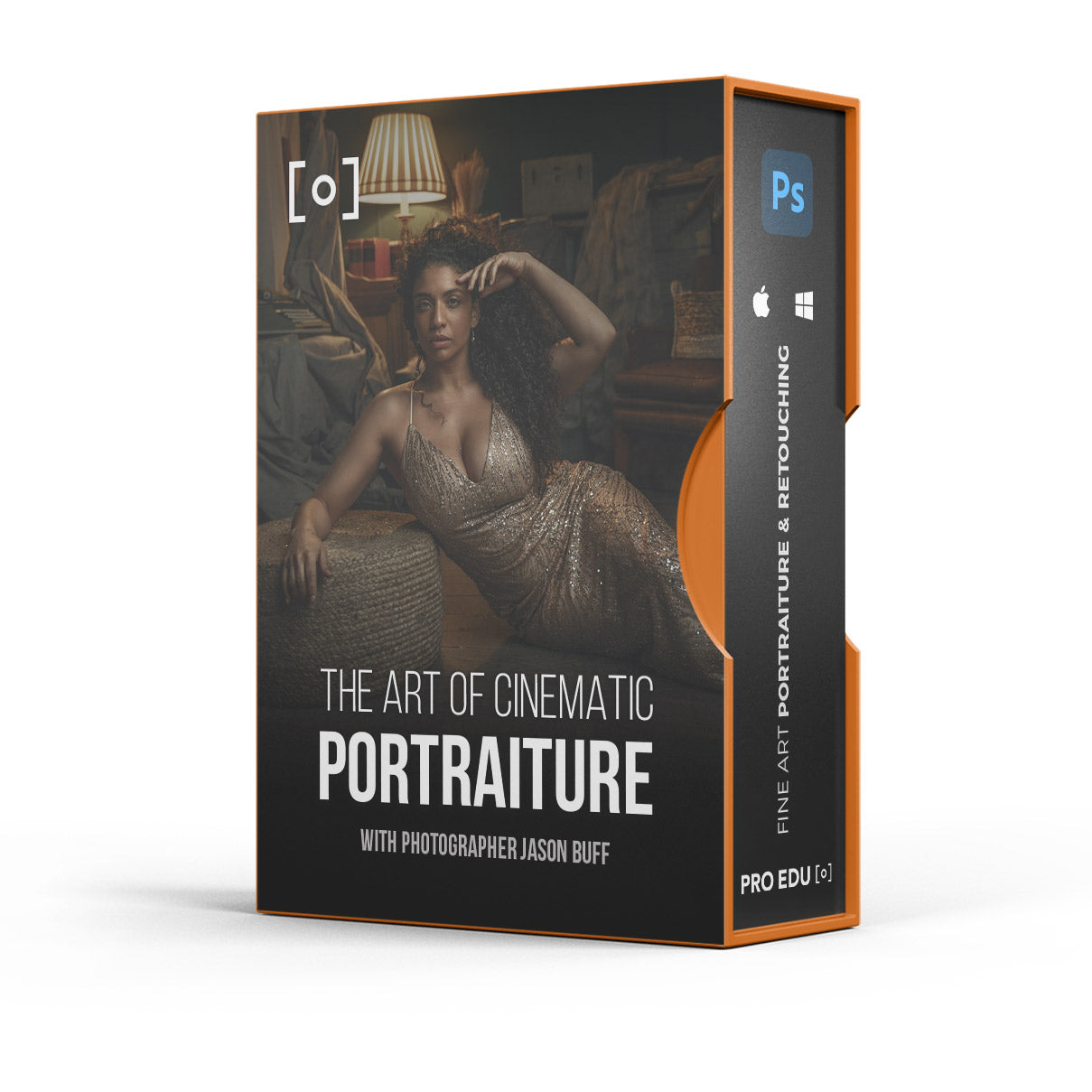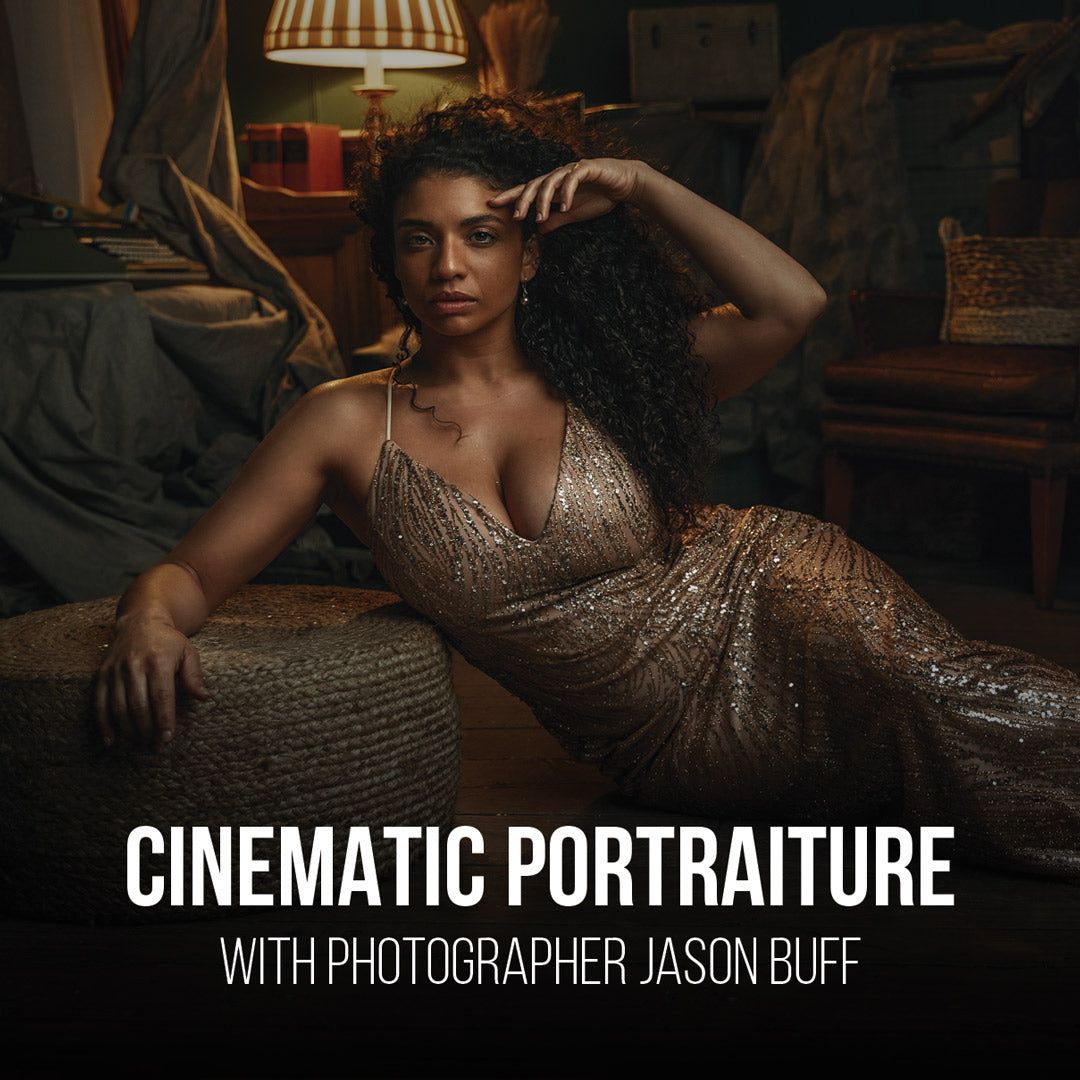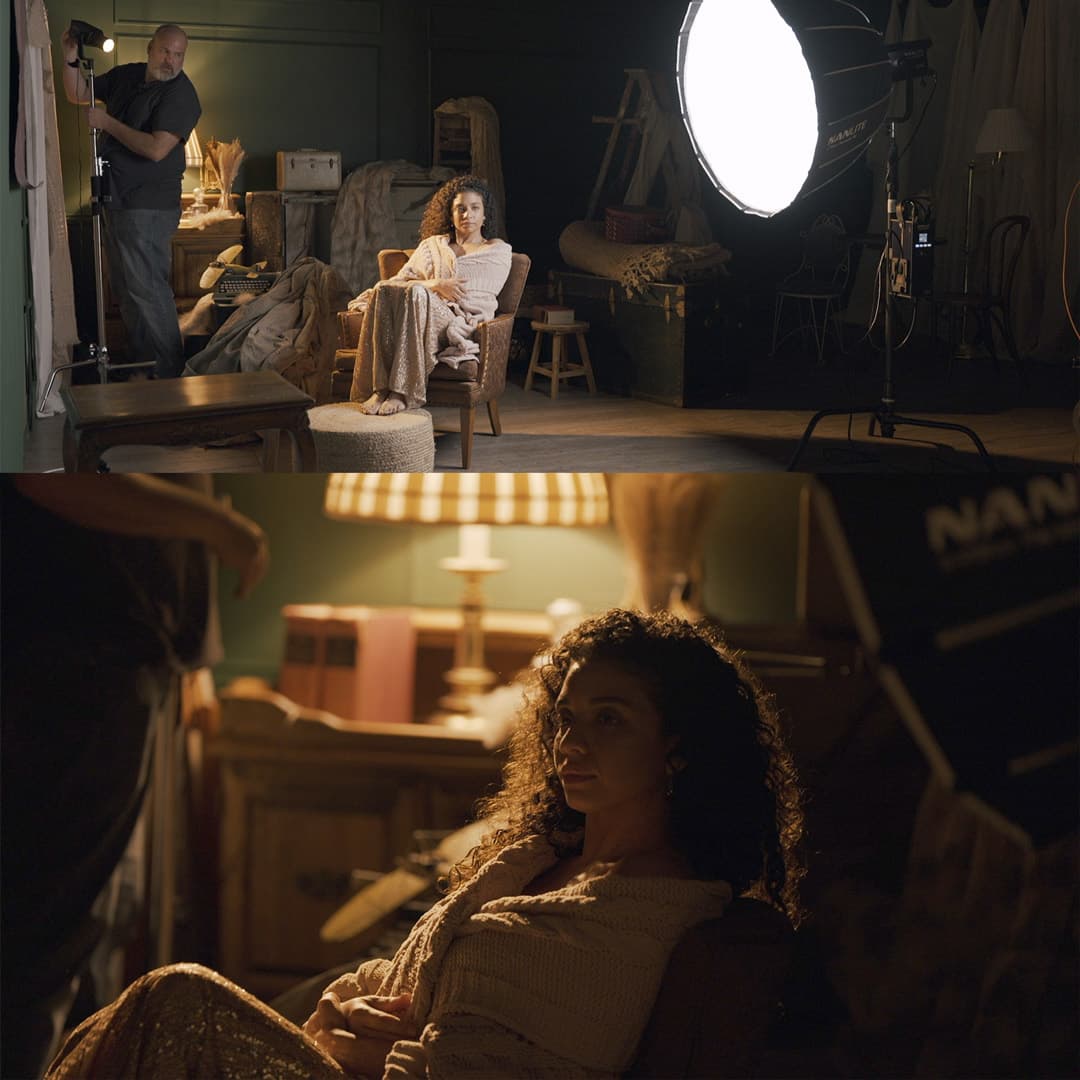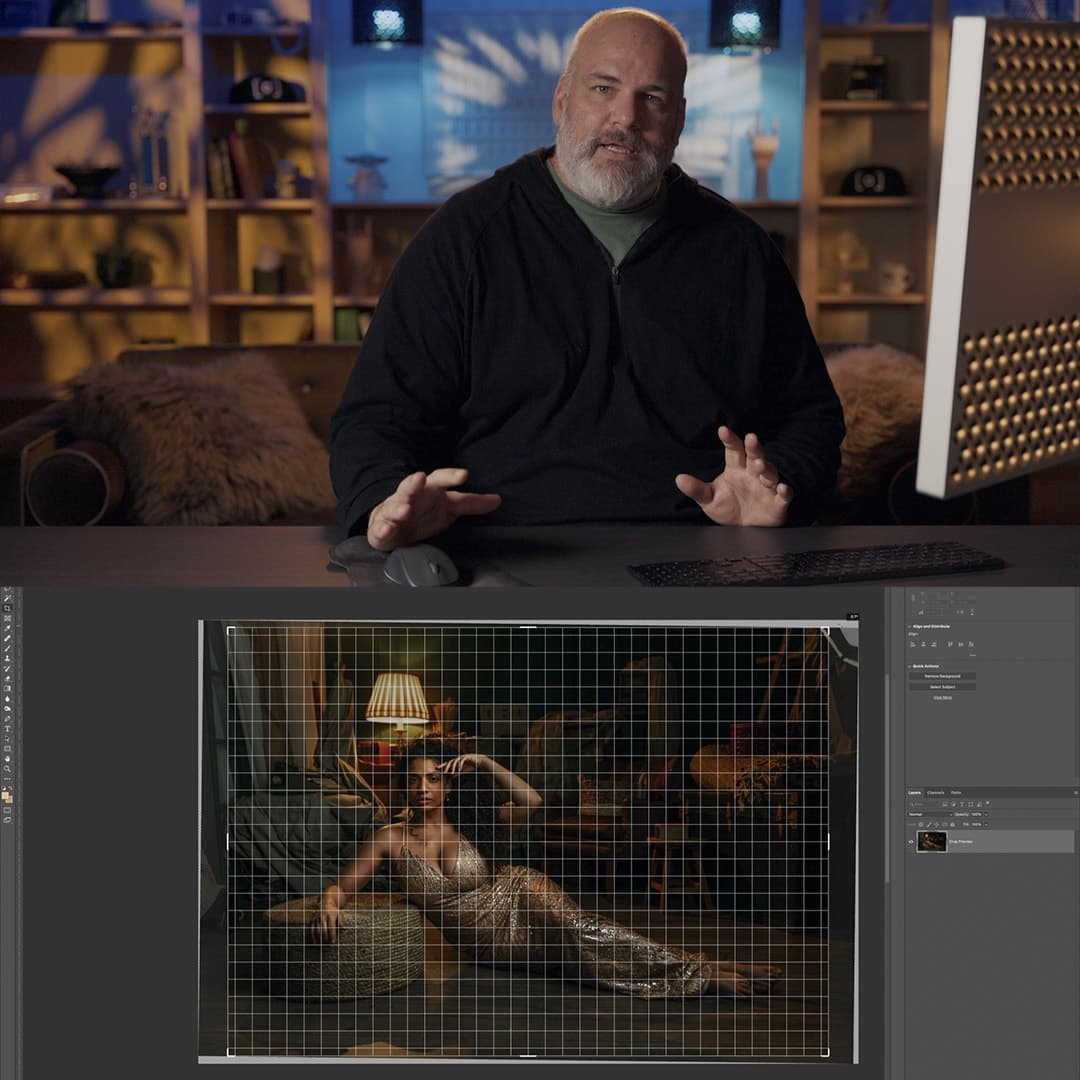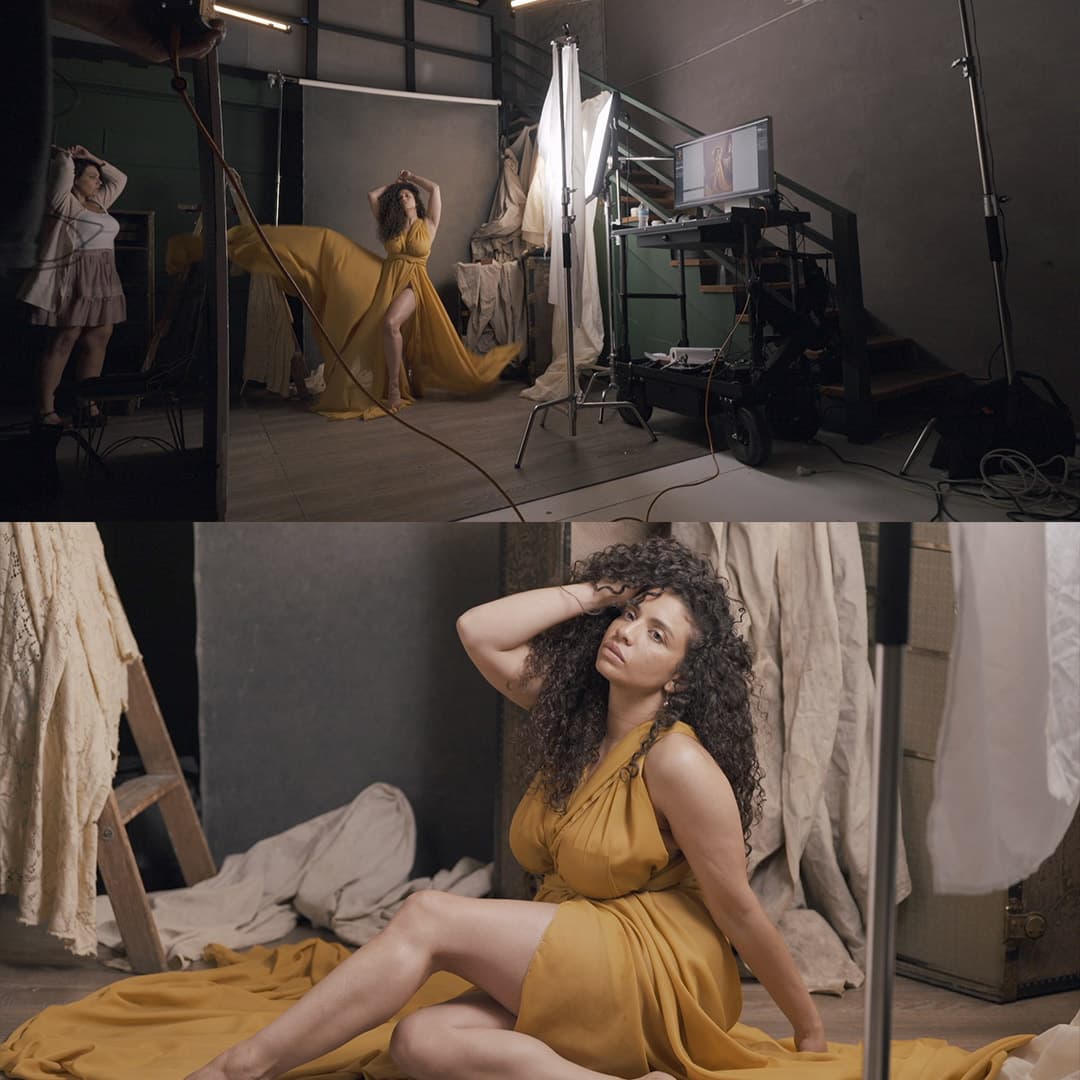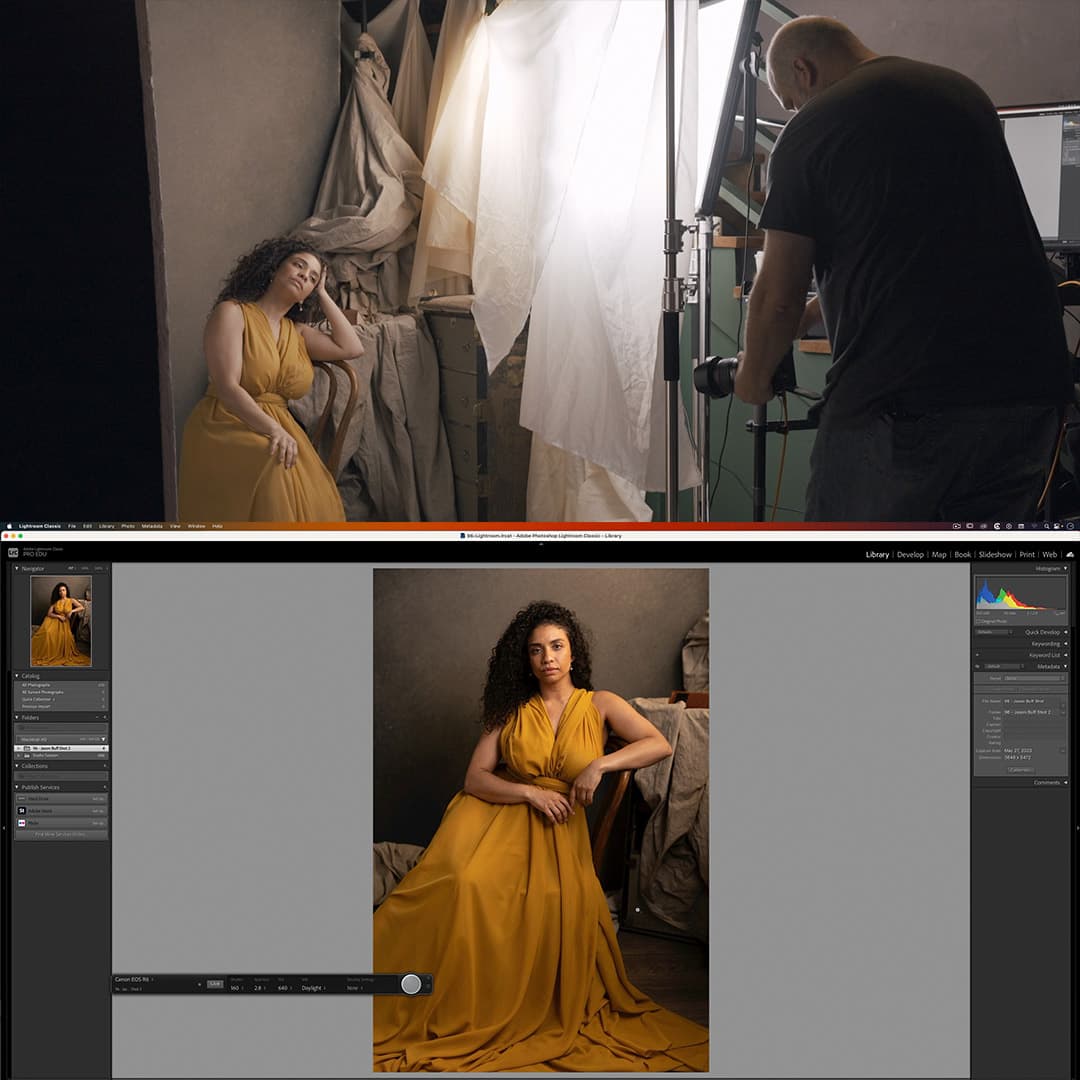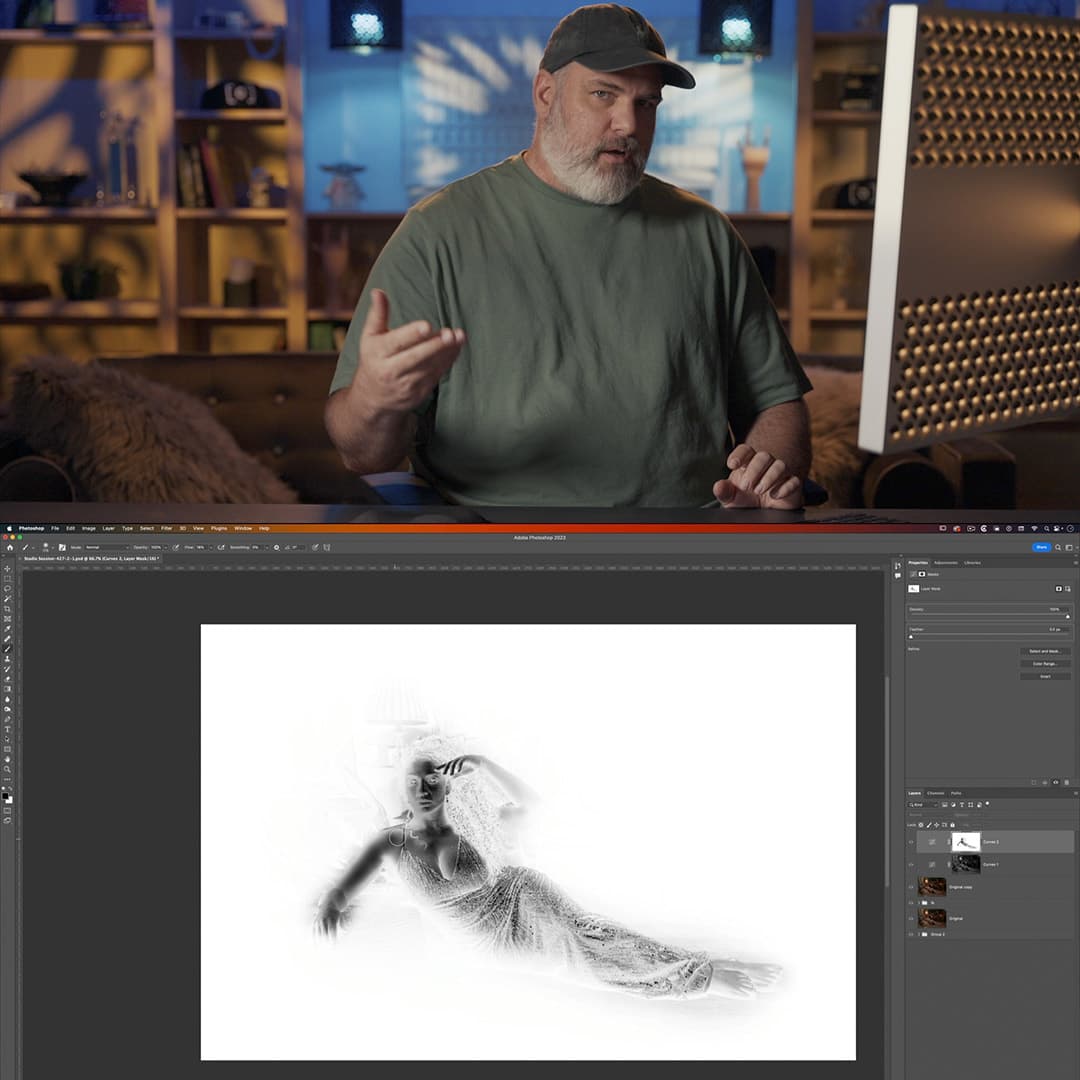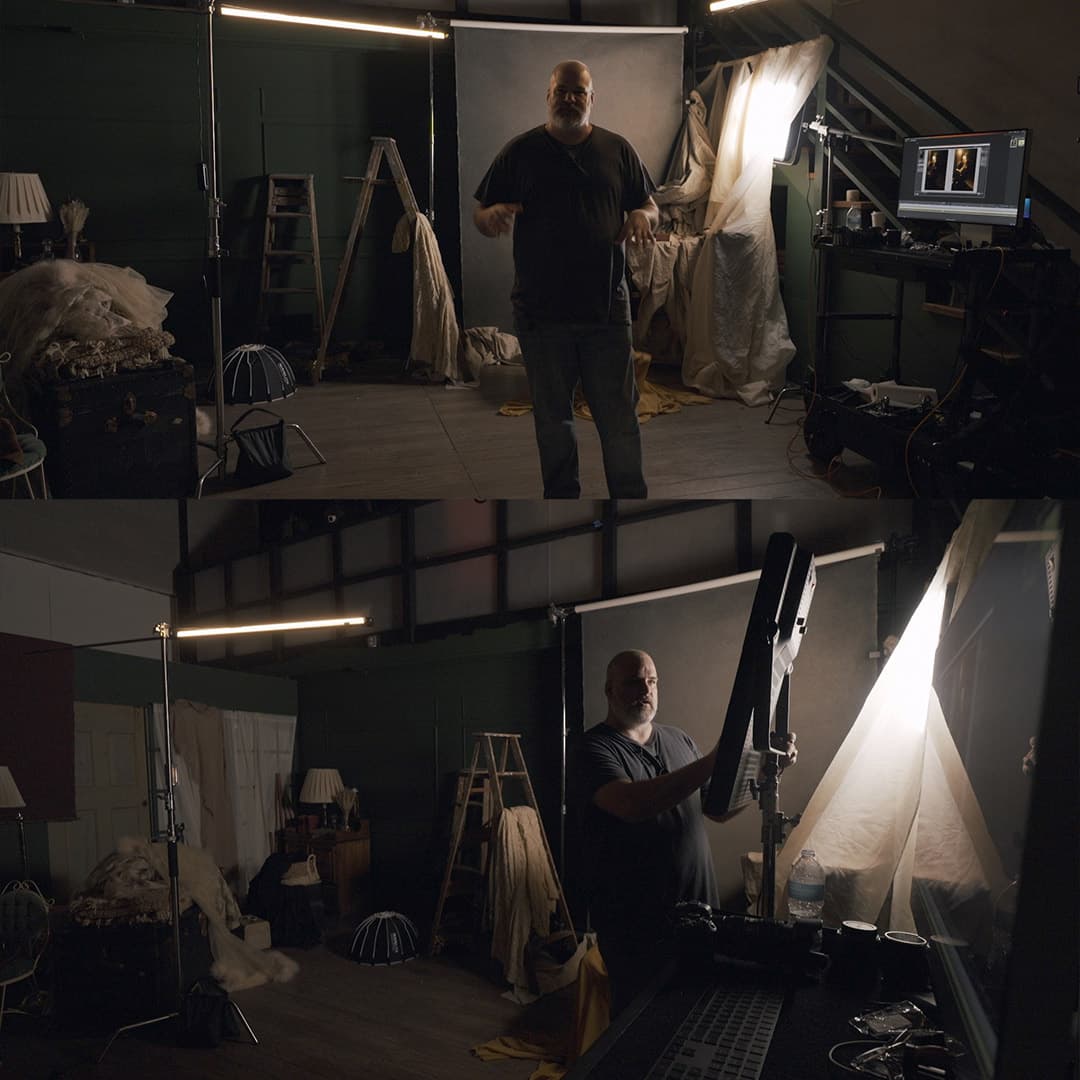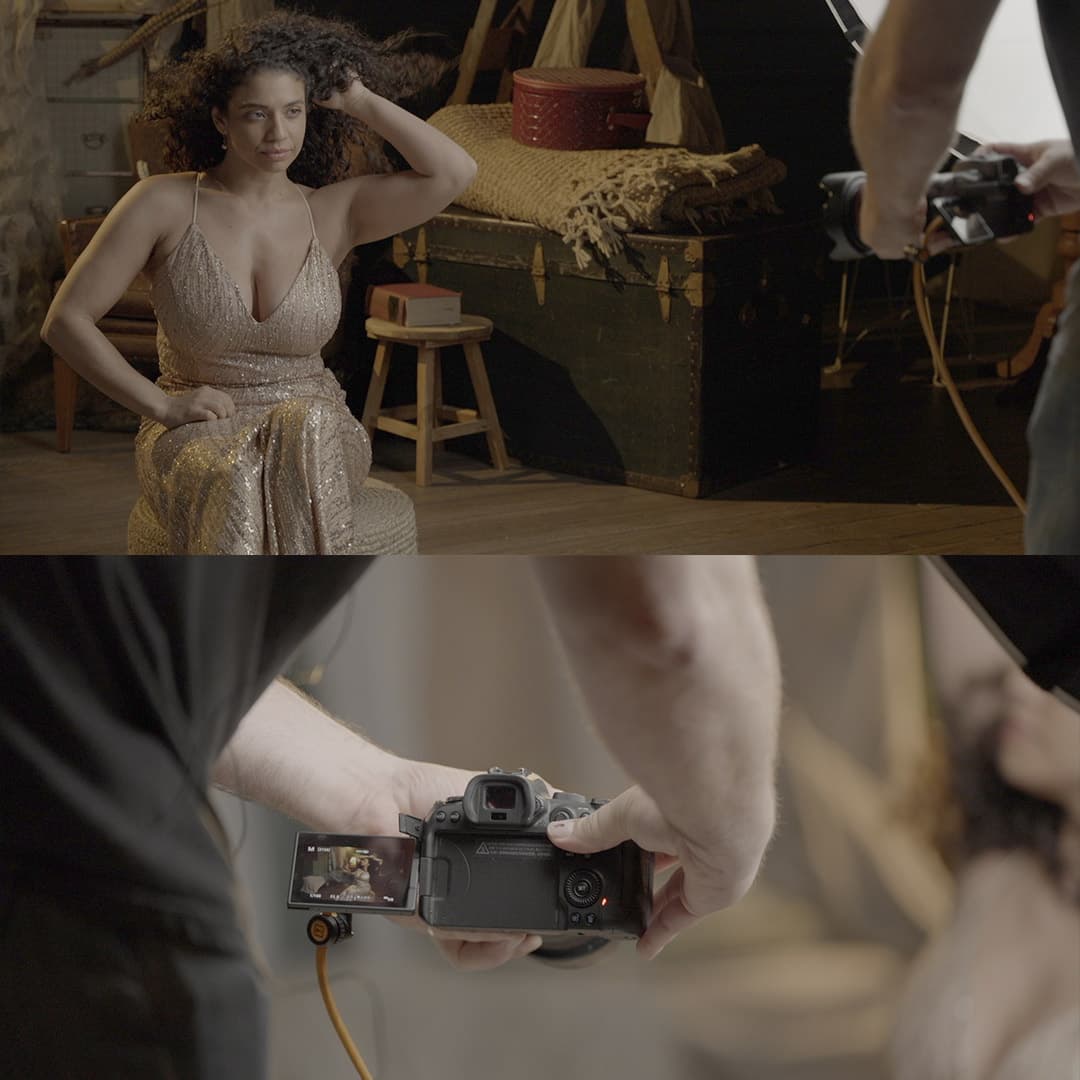Tungsten Light in Photography: Conquer Warm Indoor Lighting Techniques
Tungsten light is a popular choice for creating warm and cozy photographs, particularly in indoor settings. Its yellow-orange hue emanates a comfortable ambience in which subjects can relax, allowing photographers to capture intimate moments with a natural glow.
Understanding how tungsten light works and how to manipulate it effectively is essential for mastering warm indoor lighting. By using various techniques, photographers can control the illumination, achieve consistency, and even mix tungsten light with other light sources to create visually stunning images.
Key Takeaways
- Tungsten light offers a warm, natural glow perfect for indoor photography.
- Mastering tungsten light requires understanding its properties and using effective techniques.
- Explore advanced photography courses to enhance your lighting skills further.
Understanding Tungsten Light
Tungsten light is a type of artificial light commonly used in photography for its warm and natural glow. It is created by heating a tungsten filament to a high temperature within incandescent or tungsten-halogen bulbs.
The color temperature of tungsten light typically ranges between 2700-3200K, making it a noticeably warmer light source compared to daylight. This warm characteristic is what makes tungsten lighting popular in portrait photography, as it creates a cozy and intimate atmosphere for subjects.
Tungsten lighting can also be helpful in crafting dramatic lighting effects and evenly illuminating scenes. Common fixtures for tungsten light in photography include incandescent lamps and tungsten-halogen bulbs.
Utilizing tungsten light photography effectively requires striking the right balance between the warm light source and other elements in the scene. Maintaining this balance can result in stunning images with a warm, natural ambiance. To enhance your skills with tungsten lighting, explore various tips and techniques that professional photographers use to harness its full potential.
Mastering Warm Indoor Lighting
When capturing stunning images, it's crucial to master the technique of warm indoor lighting. One way to achieve this is by utilizing tungsten lighting, which produces a warm and natural glow, ideal for creating a cozy atmosphere in your photographs.
Natural Light and Tungsten Lighting
Natural light is essential but combining it with tungsten lighting can lead to impressive results. For instance, placing a subject next to a large window allows the window light to create a soft, flattering effect. Introducing a tungsten bulb adds warm tones and balance to the scene.
Backlight and Reflector Techniques
Incorporating backlight and reflectors can help add depth and dimension to your photos. A subtle backlight, either by placing a tungsten light setup or allowing natural light to shine from behind the subject, creates an appealing separation effect. Pair this with a reflector to bounce light back onto your subject, reducing harsh shadows.
Playing with Shadows and Highlights
Emphasizing shadows and highlights can elevate your photos to the next level. Using tungsten lighting, explore different angles and positions to find the perfect balance of shadows and highlights. Experiment with your white balance settings to adjust the warmth of your images, ensuring your subject appears natural.
Portraits During the Golden Hour
Finally, when shooting portraits with tungsten lighting, be aware of natural light's role during the golden hour. During this time, the sun casts an enchanting warm light, blending beautifully with the tungsten light. The combination of these light sources can create exceptionally captivating images, capturing the essence of your subject's personality and emotions.
Tungsten Light in Portrait Photography
When working with tungsten light in portrait photography, it's essential to understand how its warm color temperature affects your images. In the blue hour, combining tungsten light with evening light yields a dramatic effect, emphasizing the contrast between warm and cool tones.
Tungsten light can help create a cozy and intimate atmosphere in portraits, due to its warm, yellowish-orange color temperature. It enhances skin tones with an orange glow and is especially useful when photographing in low natural light conditions.
Techniques for using Tungsten Light in Portrait Photography
To achieve better results with tungsten light, we recommend following these tips:
- Color contrast: Position the subject against a background with cooler tones to accentuate the contrast between the warm tungsten light and the cool background.
- Backlight & silhouette: Use tungsten light as a backlight to create a nice rim light effect on the subject or a silhouette. Keep in mind that silhouettes will be more distinct if the background consists of cool tones.
- Skin tone: Try to balance the warm tungsten light with LED lights or flash to achieve more natural skin tones.
- Reflectors: Make use of a reflector to even out the shadows created by the tungsten light and add fill light to the subject.
Remember, when using tungsten light in portrait photography, the key is to experiment with different lighting setups and angles to find the best approach that enhances the mood you desire to create in your images.
Advanced Techniques for Tungsten Light Photography
Creating dramatic photos with tungsten light is achievable by using multiple light sources. We recommend experimenting with various light placements and intensities to enhance shadows and highlights. Adding diffusers or softboxes can help soften the light, generating a dreamy atmosphere.
To accentuate depth in your photos, incorporate bokeh effects by using a wide aperture and focusing on your subject while keeping the background blurry. This effect can lend a sense of intimacy and warmth to your images.
When balancing tungsten light with daylight or flash, we may want to use color correction gels or blue dichroic filters. These filters can neutralize the warm tones of tungsten light, producing a more accurate color representation.
Here are a few tips to implement advanced techniques for tungsten light photography:
- Use multiple lights to create depth and enhance textures.
- Soften the light with a diffuser or softbox for a dreamy atmosphere.
- Experiment with bokeh to add depth and create a visual focal point.
- Utilize color correction gel or blue dichroic filters to balance color temperature.
Following these techniques will aid in the mastery of warm indoor lighting and enhance your tungsten light photography skills.
Considering Cost and Energy Efficiency
When considering the budget for warm indoor lighting in photography, it's essential to evaluate the cost and energy efficiency of the available lighting options. Incandescent bulbs, such as tungsten-halogen bulbs, have been widely used for their warm yellow-orange light, similar to the color temperature of around 3200 K. However, these traditional bulbs can consume more energy when compared to modern energy-efficient alternatives.
Switching to energy-efficient options can save money and energy consumption in the long run. Some of these alternatives include LED bulbs that are designed explicitly for photography and can mimic the warm color output of tungsten lights. In addition, several continuous lighting solutions have been developed that offer similar warmth and color balance without the high energy usage seen in incandescent bulbs.
It's essential to research and compare the initial price, lifespan, and energy consumption of various bulbs before making a decision. We also suggest considering the amount of heat produced by the bulbs, as some options like tungsten-halogen or quartz bulbs may emit more heat than LEDs, which could affect your photography studio environment and comfort. By taking these factors into account, it is possible to find the best warm indoor lighting solution that fits both your budget and energy efficiency needs.
Frequently Asked Questions
What is the color temperature of tungsten lighting?
Tungsten lighting typically has a color temperature of around 3200K. This results in a warm, yellow-orange glow. The warmth of tungsten light can create a cozy and intimate atmosphere in photography.
How does tungsten light compare to LED and daylight?
Tungsten light emits a warm, yellow-orange color, while daylight has a cooler, blue tone and a higher color temperature. LED lights are versatile, with adjustable color temperatures, making it easier to achieve a desired lighting effect. However, tungsten lights can provide a more natural and warm glow, which can be preferred for indoor photography.
What are the drawbacks of using tungsten lights for photography?
Although tungsten lights produce a warm and cozy atmosphere, they have some drawbacks. Tungsten lights can generate a lot of heat, which can make it uncomfortable for subjects during lengthy photoshoots. Additionally, they can also consume more energy compared to energy-efficient alternatives like LEDs.
How can I effectively use tungsten light for warm indoor shots?
To effectively use tungsten lights for warm indoor shots, you can position the light sources at different angles to create depth, play with shadows, and use diffusers to soften the light. You can also work with reflectors to manipulate the intensity and direction of the light.
Which settings should I adjust on my camera for optimal tungsten light photography?
For optimal tungsten light photography, you may need to adjust your camera's white balance setting to compensate for the warm color temperature. You can use the tungsten preset or manually set the color temperature to around 3200K. It's also important to adjust your ISO, shutter speed, and aperture for proper exposure in low-light conditions.
What are some popular tungsten light alternatives for a cozy atmosphere?
Some popular alternatives for achieving a cozy atmosphere without using tungsten lights include warm-toned LED bulbs and incandescent bulbs. These options can provide similar warm and intimate lighting while potentially being more energy-efficient and cooler to the touch.



